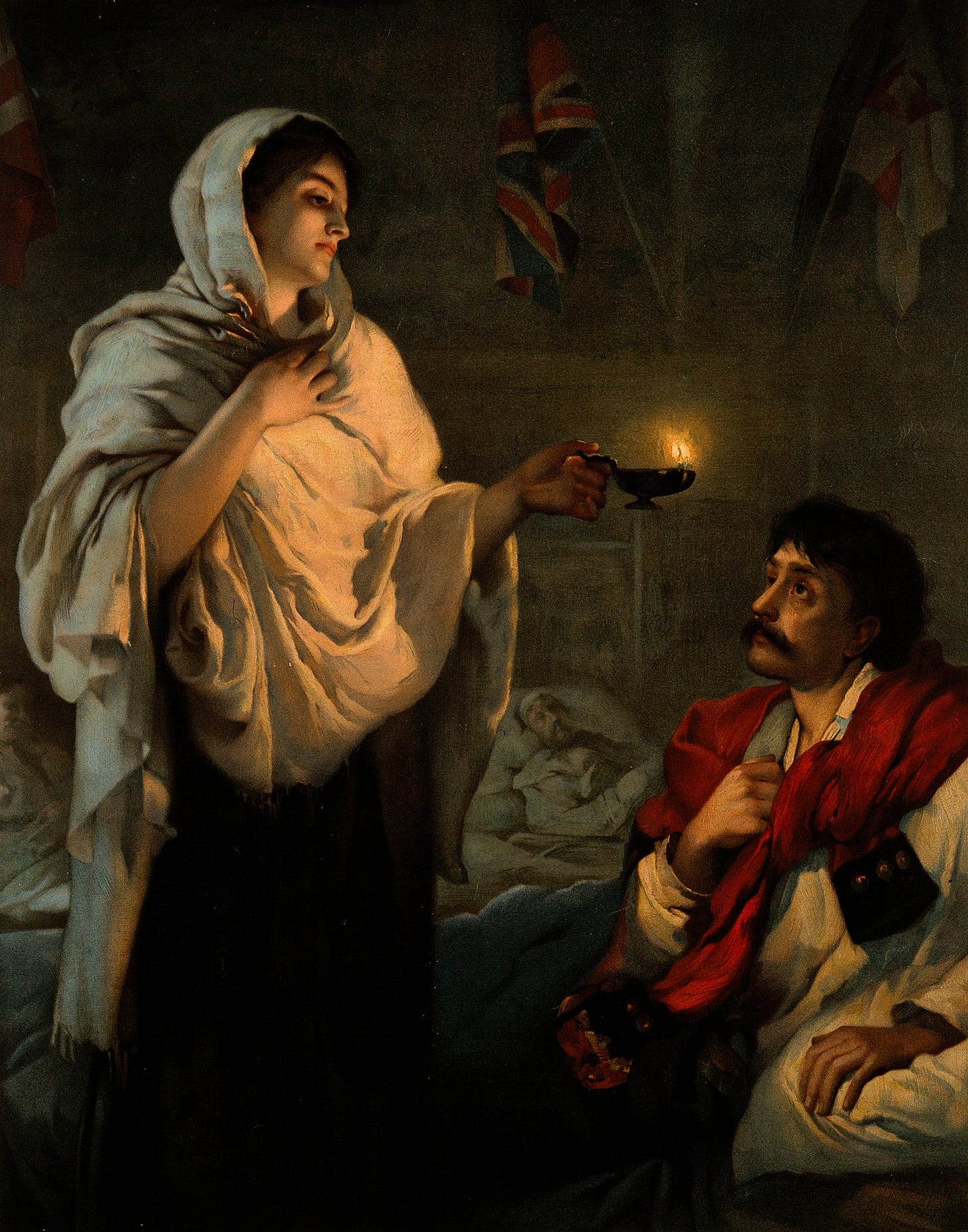Florence Nightingale
Social reformer, statistician and the founder of modern nursing
Florence Nightingale was born on 12 May 1820 into a wealthy and well-connected British family at the Villa Colombaia in Florence, Tuscany, from which she took her name. The family returned to England the following year, dividing their time between Embley Park in Hampshire and Lea Hurst in Derbyshire. Her father, William Nightingale, believed strongly in education for women. Florence and her elder sister Parthenope were taught history, mathematics, Italian, philosophy, and classical literature - an unusually broad curriculum for girls of their class.
From an early age, Florence displayed a talent for collecting and analysing data, a skill that would later underpin her reforms in healthcare. Yet her intellectual ambitions set her apart from the expectations of her mother and sister, who were dismayed when she rejected the traditional path of marriage and social duties. Instead, she devoted herself to nursing, a profession that at the time was considered unsuitable for women of her standing.
In 1853, she became superintendent of the Institute for the Care of Sick Gentlewomen in Upper Harley Street, London, where her organisational skills and calm authority quickly won respect. The following year, as the Crimean War raged between Russia and the allied forces of Britain, France, the Ottoman Empire, and Sardinia, she was asked by the government to lead a team of nurses to the British base hospital at Scutari (modern-day Uskudar in Istanbul).
On 17 October 1854, Florence Nightingale set out from London with a group of thirty-eight nurses bound for the Crimea. It was a journey that would not only define her life but also transform the very nature of nursing and the care of the wounded in war. For the first time, women were to be officially permitted to serve as nurses under military authority. Nightingale’s mission, hurriedly arranged and fraught with controversy, would soon evolve into one of the most significant humanitarian efforts of the nineteenth century.
When Nightingale and her team arrived at the Barrack Hospital in Scutari, they found chaos and despair. The wards were filthy, overcrowded, and overrun with rats and lice. There was a desperate shortage of medical supplies, bedding, and even clean water. Diseases, such as cholera, typhus, and dysentery, claimed far more lives than the battlefield ever had. Mortality rates soared to a shocking 42 per cent.
Nightingale immediately imposed order. She organised cleaning rotas, improved ventilation, secured proper sanitation, and set up laundries. She purchased food and essentials with her own money, and introduced rigorous hygiene practices such as handwashing, clean linen, and regular bathing. These measures, combined with a reorganisation of hospital kitchens and supplies, swiftly reduced the spread of infection.
The results were dramatic. Within months, mortality at Scutari had fallen to just 2 per cent. Beyond the statistics, the nurses also restored humanity to the care of soldiers. They dressed wounds with care, offered comfort and compassion, and treated patients with dignity. Nightingale herself became a symbol of hope. She gained the nickname “The Lady with the Lamp” from a phrase in a report in The Times:
She is a “ministering angel” without any exaggeration in these hospitals, and as her slender form glides quietly along each corridor, every poor fellow’s face softens with gratitude at the sight of her. When all the medical officers have retired for the night and silence and darkness have settled down upon those miles of prostrate sick, she may be observed alone, with a little lamp in her hand, making her solitary rounds.
— William Russell, Cited in Cook, E. T. (1913). The Life of Florence Nightingale. Vol. 1, p. 237.
When she returned to Britain after the war, Florence Nightingale was celebrated as a national heroine. Yet she shunned fame, focusing instead on reform. Her experience in the Crimea had convinced her that compassion must be backed by evidence. She compiled meticulous reports and used innovative diagrams, among the earliest examples of statistical infographics, to show how poor sanitation caused unnecessary deaths. She is credited with inventing the polar area diagram, a form of pie chart. Her findings led to sweeping government reforms of military hospitals and the establishment of the Royal Commission on the Health of the Army.
In 1860, Nightingale founded the Nightingale Training School for Nurses at St Thomas’ Hospital in London, the world’s first secular nursing school. It professionalised nursing, creating a model of discipline, skill, and compassion that spread across the globe.
Florence Nightingale’s voyage to the Crimea began as an act of service but ended as a revolution. Through her courage, intellect, and unwavering sense of duty, she redefined both nursing and the moral responsibility of medicine. Her legacy lives on not just in the hospitals and nursing schools named after her, but also in the use of statistics and infographics to document and demonstrate progress.
CLICK HERE to read more History and Happenings articles.
If you love history, then you’ll love The Chronicles of St Mary’s series by Jodi Taylor.
Buy the first book in the series, Just One Damned Thing After Another from Amazon.



